Circle
Circle doubling down on Hong Kong presence
Published
3 weeks agoon
By
admin

Circle plans to bolster its presence in Southeast Asia, with Hong Kong’s stablecoin roadmap incentivizing the firm’s proposed business expansion.
Circle, the world’s second-largest stablecoin issuer USDC (USDC), intends to hire more employees in Hong Kong and establish additional business relationships in the region, according to local media reports on Nov. 4.
Circle’s operator reportedly views Hong Kong as a key market for stablecoins. This news aligns with previous coverage from crypto.news, which quoted Circle CEO Jeremy Allaire’s remarks on Hong Kong’s upcoming stablecoin strategy.
In late October, Allaire stated that USDC and other stablecoins play a vital role in Hong Kong’s trading practices. These comments followed a July consultation paper from the Hong Kong Monetary Authority (HKMA) concerning a stablecoin framework.
The HKMA aims to implement clear regulations and standards for stablecoins by 2025, integrating these fiat-pegged cryptocurrencies into the region’s financial system.
Local companies have already embraced stablecoins ahead of formal regulatory guidelines. First Digital Trust activated its FDUSD token on Solana last month, adding to existing support on BNB Chain and Ethereum.
Hong Kong has emerged as one of Asia’s leading crypto-friendly jurisdictions despite close ties to China, an anti-Bitcoin (BTC) nation. Some experts suggest that Hong Kong acts as an extension of China’s financial ecosystem, providing a space for crypto and other innovations.
In Circle-related updates, the USDC issuer published a whitepaper for its Confidential ERC-20 standard. The company stated that the new token design aims to preserve user privacy while enhancing regulatory compliance at the smart contract level.
Circle also relocated its global headquarters to New York, with plans to launch an initial public offering and list its shares on Wall Street.
Source link
You may like


Trader Says Top-10 Altcoin To Vastly Outperform Bitcoin and Ethereum, Hit New Record High Quicker Than Expected
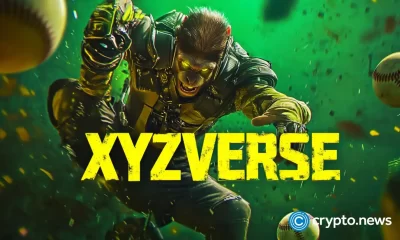

5 tokens to consider buying today
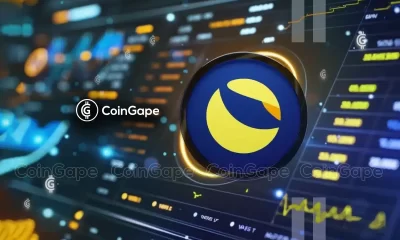

Terra Luna Classic Community Discord On Proposal Amid LUNC Price Rally
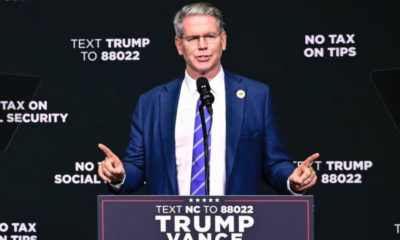

Trump Nominates Pro-Crypto Hedge Fund Manager Scott Bessent as Treasury Secretary


Dogecoin surges 10% as this new altcoin shakes the market, and preps for stage 2 presale
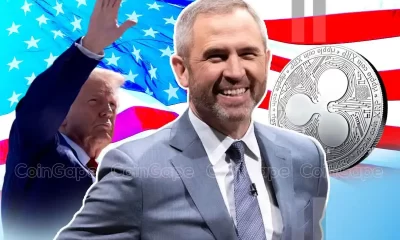

Ripple CEO Shares Bullish News With XRP Army As Trump Names Treasury Secretary
Altcoins
BlackRock in Talks With Crypto Exchanges About Using Its BUIDL Token As Derivatives Collateral: Report
Published
1 month agoon
October 19, 2024By
admin
Asset management titan BlackRock is reportedly in talks with numerous crypto exchange platforms about using its proprietary token BUIDL as collateral for derivatives contracts.
According to a new report by Bloomberg, anonymous people familiar with the matter say the world’s largest asset manager is exploring the idea of utilizing BUIDL – the crypto asset related to the firm’s tokenized mutual fund – as collateral for trading derivatives contracts.
BUIDL, which launched in March of this year and stands for BlackRock USD Institutional Digital Liquidity Fund, is a tokenized money-market fund designed to offer a stable value of $1 per token built on the Ethereum (ETH) blockchain that offers blue-chip traders yields.
Bloomberg says the crypto exchanges BlackRock is in talks with include Binance, the world’s largest crypto exchange by volume, as well as OKX and Deribit.
Previously, it was reported that the fund invests in cash, US Treasury Bills, and repurchase agreements and sends dividends directly to investors’ wallets as new tokens every month.
As stated by Robert Mitchnick, BlackRock’s head of digital assets, in a press release issued by Securitize, BlackRock’s brokerage partner,
“[BUIDL] is the latest progression of our digital assets strategy. We are focused on developing solutions in the digital assets space that help solve real problems for our clients.”
In April, stablecoin issuer Circle launched a new smart contract function that permits holders of BUIDL to convert their tokens into USDC. At the time, Circle chief executive Jeremy Allaire said that the new functionality would allow “investors to move out of tokenized assets at speed, lowering costs and removing friction.”
Don’t Miss a Beat – Subscribe to get email alerts delivered directly to your inbox
Check Price Action
Follow us on X, Facebook and Telegram
Surf The Daily Hodl Mix
 

Disclaimer: Opinions expressed at The Daily Hodl are not investment advice. Investors should do their due diligence before making any high-risk investments in Bitcoin, cryptocurrency or digital assets. Please be advised that your transfers and trades are at your own risk, and any losses you may incur are your responsibility. The Daily Hodl does not recommend the buying or selling of any cryptocurrencies or digital assets, nor is The Daily Hodl an investment advisor. Please note that The Daily Hodl participates in affiliate marketing.
Generated Image: Midjourney
Source link
Circle
Circle exec expects ‘huge shift’ in EU market post-MiCA
Published
2 months agoon
September 27, 2024By
admin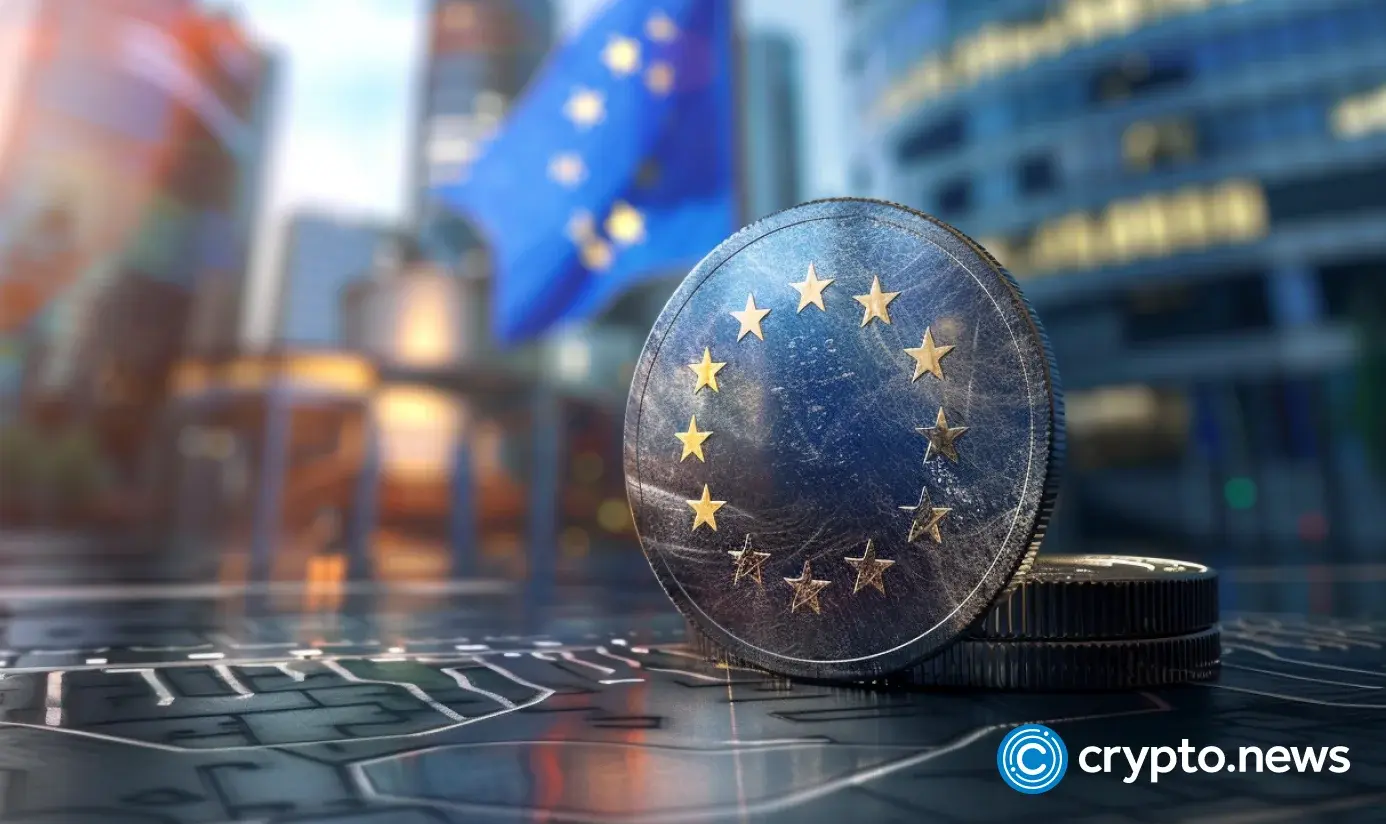
Patrick Hansen, Circle’s European strategy director, predicted major leaps in the EU’s crypto and stablecoin market by late 2025.
At the European Blockchain Convention in Barcelona, Hansen shared expectations of advancements in the crypto market structure across the European Union. The bloc’s Markets in Crypto-Assets Regulation, known as Markets in Crypto-Assets Regulation, would be the primary catalyst for this growth, said Hansen during a panel titled “What is Going on Behind the Scenes – Post MiCA?”
MiCA signaled a shift in the EU’s crypto regulatory strategy, providing comprehensive guidelines for governments, institutions, and investors regarding digital assets.
Indeed, MiCA outlined requirements for crypto exchanges and thresholds for stablecoin reserves. Circle (USDC) was one of the first stablecoin beneficiaries of this new regime and snagged MiCA’s inaugural stablecoin license.

Hansen disclosed that MiCA compliance and the eventual regulatory approval involved a process different from those in other regions. For instance, USDC’s issuer liaised with regulators for up to 24 months before obtaining approval.
Circle also applied for its Electronic Money Institution license in France, which was accepted by the Autorité de Contrôle Prudentiel et de Résolution, the French banking watchdog.
According to Hansen, the firm’s euro-pegged stablecoin, EURC, has jumped 60-70% since July when approval was issued. The token now boasts over 67 million euros in market cap. Hansen foresees continued growth for EURC and other stablecoins in the EU, driven by MiCA’s rules.
We believe that in the European Union, for our euro stablecoin, but for euro stablecoins overall, we can expect at least significant growth in the next 12 months.
Patrick Hansen, Circle’s EU senior director, strategy & policy

As the USDC operator solidified its European foothold, CEO Jeremy Allaire advanced plans for an initial public offering in the U.S. The digital payment provider relocated its global headquarters to the heart of New York City as part of a roadmap to go public. Circle’s new office is located in the One World Trade Center, alongside some of Wall Street’s biggest names like Goldman Sachs.
Source link
Circle
What is the U.S. dollar’s role in stablecoin ecosystems?
Published
2 months agoon
September 18, 2024By
admin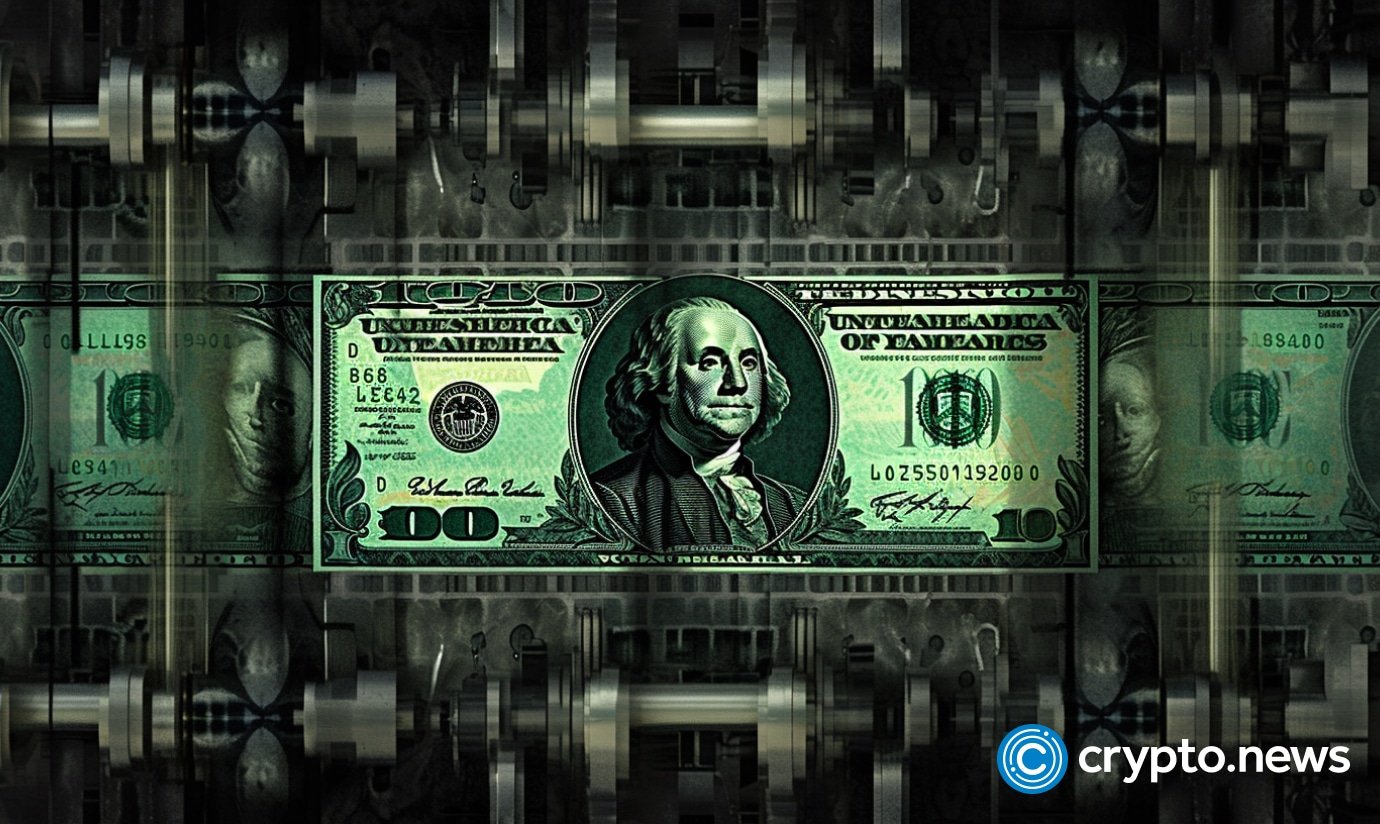
Stablecoins have seen explosive growth in the last four years, increasing from a $17.6 billion market capitalization to $170.6 billion. The number of holders has also skyrocketed from 3.78 million to 119.72 million. However, this growth brings critical questions. How safe is it to hold stablecoins? How secure are the assets backing stablecoins? Could stablecoins pose a threat to traditional banking systems, and how might governments react to such competition?
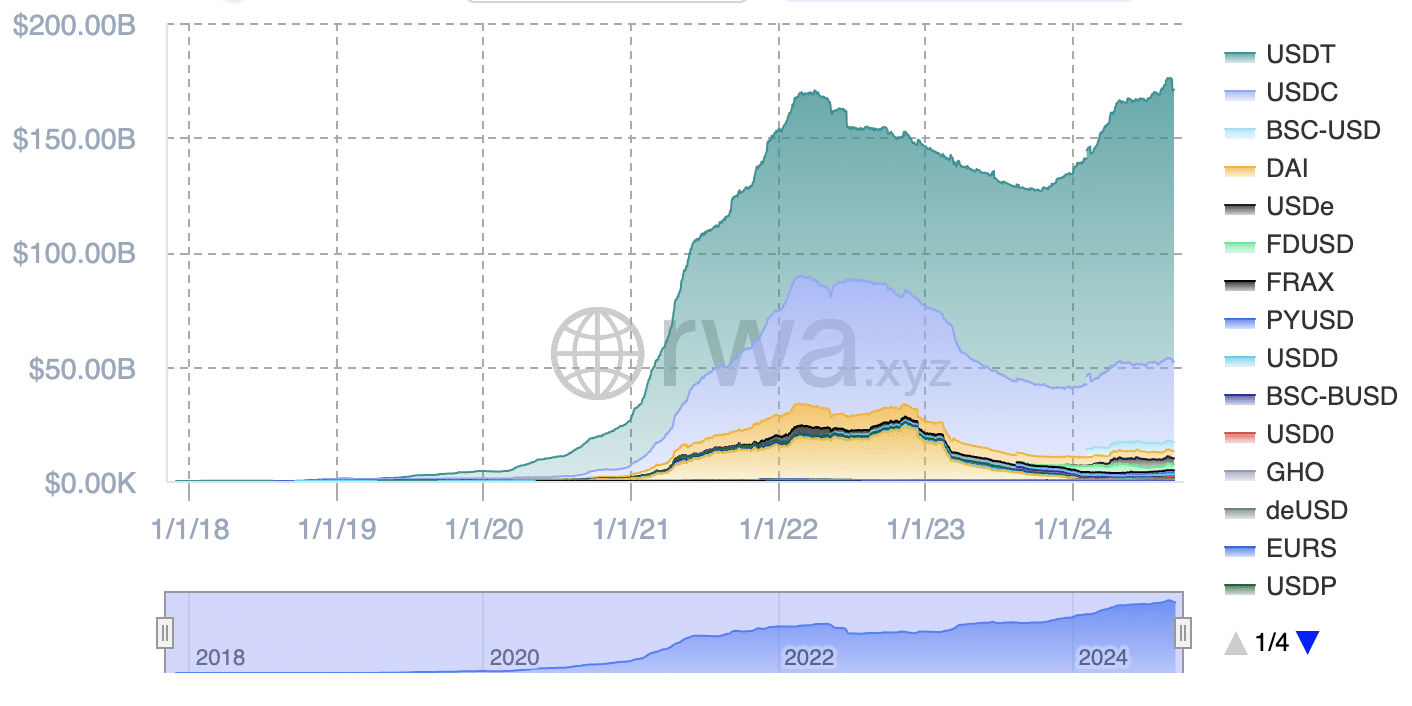
These are essential questions, yet they are often ignored. The TerraUSD (UST) collapse serves as a prime example, where only a small group of investors and analysts predicted its downfall before it finally happened. Many users simply trusted the system without questioning the true stability of the underlying assets. And, unfortunately, because of that blind trust, they lost a lot of money. Understanding the risks requires first exploring the broader concept of what money represents.
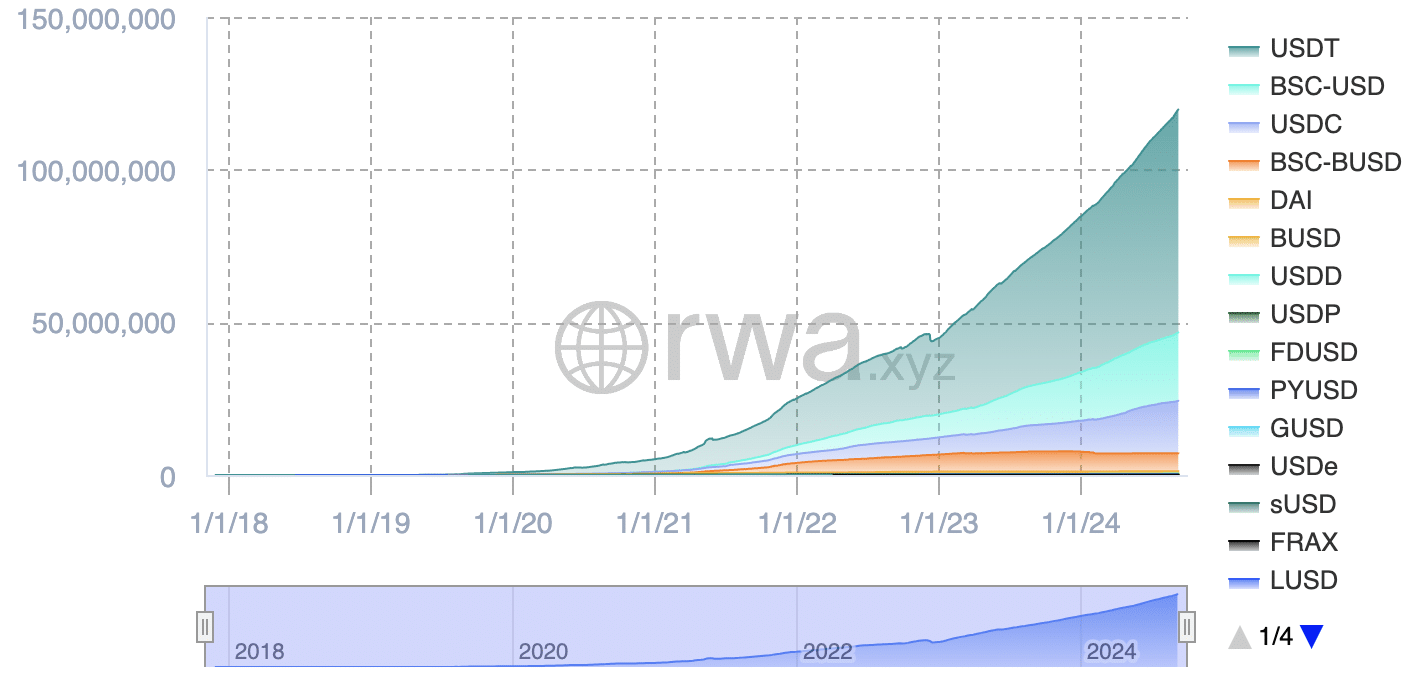
What is money?
Money = value. When a person buys a chocolate bar, they exchange money for that value. The merchant can then use the money to obtain the value they need in return.
Money hasn’t always existed in the form of paper bills or digital currencies. In ancient times, people used cattle, leather, mollusks, wheat, and salt as mediums of exchange. Eventually, societies shifted to gold as a more standardized form of value. But imagine going to the store and buying a chocolate bar for the price of 0.0353 ounces (1 gram) of gold. This would require scales, cutting tools, and is simply not convenient.
So, the government created a model that worked this way: The government takes your gold in exchange it gives you money depending on the exchange rate. It was the Gold Standard, which happened first in England in 1816. In time, the government changed the model now they were printing money without anything backing it, which is where we are now.
The trust model
The evolution from tangible value to paper money introduced a key factor: trust. Initially, people trusted the inherent value of a commodity like gold. Today, trust has shifted from something (gold) to someone (the government or central authority). Trust forms the basis of modern currency systems. Without trust, exchange would be impossible. For instance, no one would sell a house for a bag of rocks because rocks hold no universal trust or value.
Modern money, whether paper or digital, holds value only because of collective trust in the government or the central institution behind it. Without this trust, money would revert to being worthless pieces of cotton and linen.
What is fiat money?
The term “fiat” refers to a decree or order issued by someone in authority. When it comes to fiat money, its value stems not from any intrinsic property or commodity backing but from the government’s declaration that it holds value. In simple terms, money has value because the government says so.
Cons of fiat money
Fiat money has several critical weaknesses. It is centralized, meaning that trust is placed in the actions and integrity of banks and governments.
Another problem with fiat money is excessive printing, which leads to inflation.
So, several problems plague traditional money systems. First, paper currency can become worthless overnight due to governmental decisions. Second, the stability of money varies widely between countries. Inflation affects all currencies, but some experience it more severely, leading to rapid devaluation and loss of purchasing power.
But digital fiat money introduces its own set of issues. Banks operate on a fractional reserve system, meaning they hold only a portion of customer deposits in reserve. Laws and regulations, such as the Basel Accords and national banking laws, permit banks to lend out the majority of deposited funds. This practice transforms money into mere numbers on a ledger, essentially IOUs, without full backing.
The fractional reserve system also brings the risk of a bank run, where a large number of customers withdraw their funds at once due to fears about the bank’s solvency. Since banks do not hold all deposits in reserve, they often cannot meet the sudden demand for cash, which leads to panic and potential bank failure.
Stablecoins operate on a different level from traditional fiat money but are not entirely immune to these issues either. Unlike fiat currencies, stablecoins like USDT, USDC, and DAI aim to maintain a stable value by being pegged to a fiat currency, usually the U.S. dollar.
Why are the majority of stablecoins pegged to USD?
Before understanding how stablecoins differ from traditional fiat money, we need to explore why the U.S. dollar holds such a dominant position. Why not the Swiss Franc or the Japanese Yen? Many would respond that the dollar is simply used everywhere, but the real question is why it became the world’s dominant currency in the first place.
The U.S. dollar’s dominance is due to its “exorbitant privilege.” As long as the dollar remains the world’s reserve currency, the United States avoids balance of payment crises. Through mechanisms like the Petrodollar system and the forced purchase of the U.S. Treasuries by foreign central banks, the U.S. could borrow cheaply and spend without immediate consequence.
The system allows the U.S. to print dollars and use them to buy real goods and services globally, exporting the inflation created to other countries. This is one reason developing nations often suffer from higher inflation—they absorb the inflationary effects of American monetary policy. In essence, the U.S. has a unique advantage in the global economy, trading printed money for tangible goods without immediately facing inflationary pressures domestically.
The Federal Reserve lowers interest rates or engages in quantitative easing to inject new dollars into the economy. Such actions increase the total supply of dollars circulating globally. U.S. governments, corporations, and banks benefit from the system by accessing cheaper credit, which leads to the creation of more dollars as loans are issued. Newly minted dollars are used to import goods from abroad, further pushing dollars into foreign economies.
Once foreign countries accumulate dollars, they face a critical choice. They can allow their own currency to appreciate against the dollar, but doing so would harm their export competitiveness. Alternatively, they can print more of their own currency to maintain its value relative to the dollar. However, this approach often leads to domestic inflation, creating a cycle in which foreign central banks must balance the value of their currency against the effects of inflation.
The U.S. benefits enormously from the global arrangement. When foreign countries accumulate dollars, they frequently invest them in U.S. Treasuries, which effectively lend money to government at low interest rates. The process helps the U.S. finance its deficit spending on war, infrastructure, and social programs. The U.S. can sustain such expenditures because foreign nations continue to buy its debt, driven by their need to hold dollars for trade and financial stability.
This is why the vast majority of stablecoins are pegged to the U.S. dollar, and almost the entire stablecoin market revolves around it as the anchor.

In just four years, the monthly transfer volume of stablecoins has increased from $202 billion to $3.6 trillion.

To put that into perspective, when compared with traditional finance, the U.S. dollar forex trade in 2022 reached $2,739 trillion, according to the Progressive Policy Institute. By 2024, it is reasonable to estimate that trade will grow to $3 trillion, translating to approximately $250 trillion traded per month. So, stablecoins already represent nearly 1.5% of the dollar trade.
How do stablecoins maintain their peg?
The vast majority of stablecoin market volume and capitalization is concentrated in three primary coins: USDT, USDC, and DAI. Each of these stablecoins employs different mechanisms to maintain their peg to the U.S. dollar.
USDT
Tether (USDT) keeps its peg to the U.S. dollar through a system of reserve assets and strict issuance protocols. For every USDT token in circulation, an equal amount of value exists in reserve, typically held in cash, cash equivalents, and U.S. Treasuries. The reserves ensure that each USDT can be exchanged for one USD.
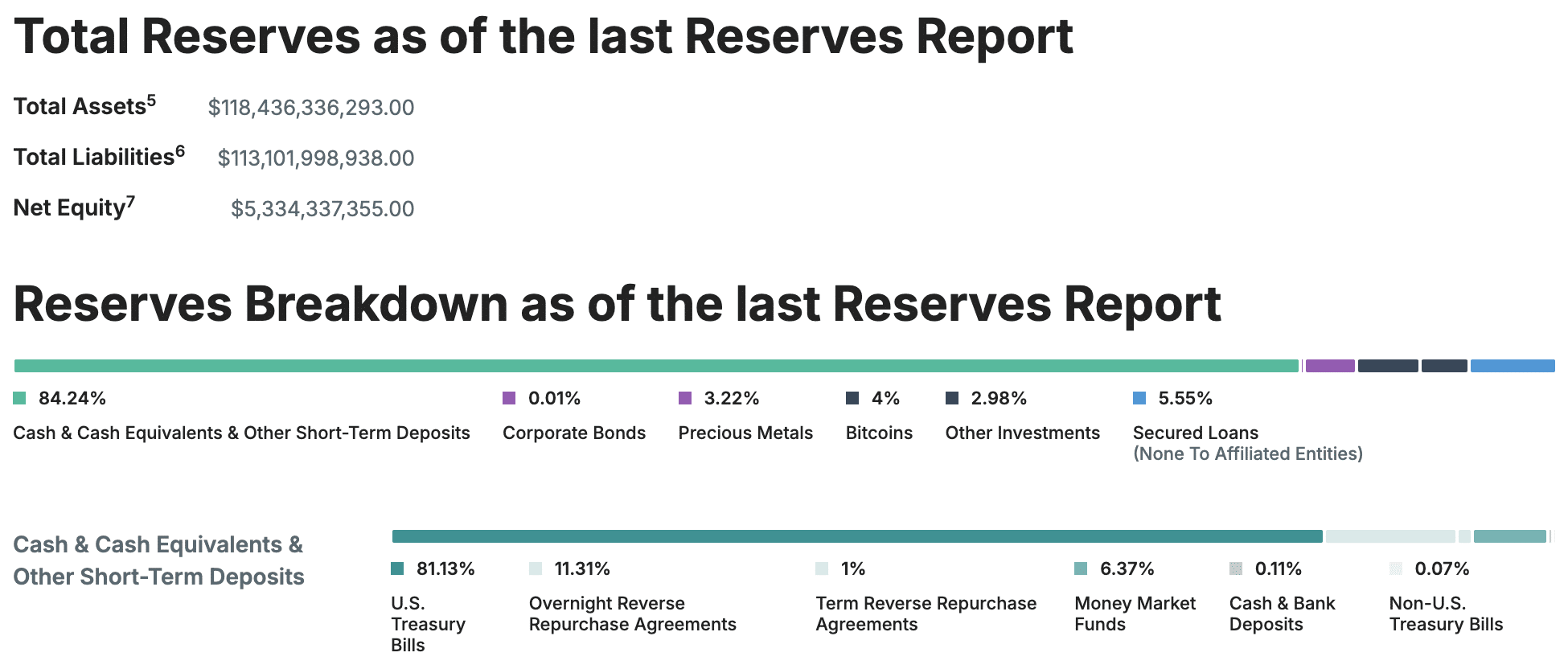
When demand for USDT grows, Tether issues additional tokens, matching them with the necessary reserve assets. In contrast, when users exchange USDT for USD, the tokens are destroyed to keep the supply in line with the reserves.
The peg always deviates slightly due to liquidity imbalances or shifts in supply and demand on exchanges.
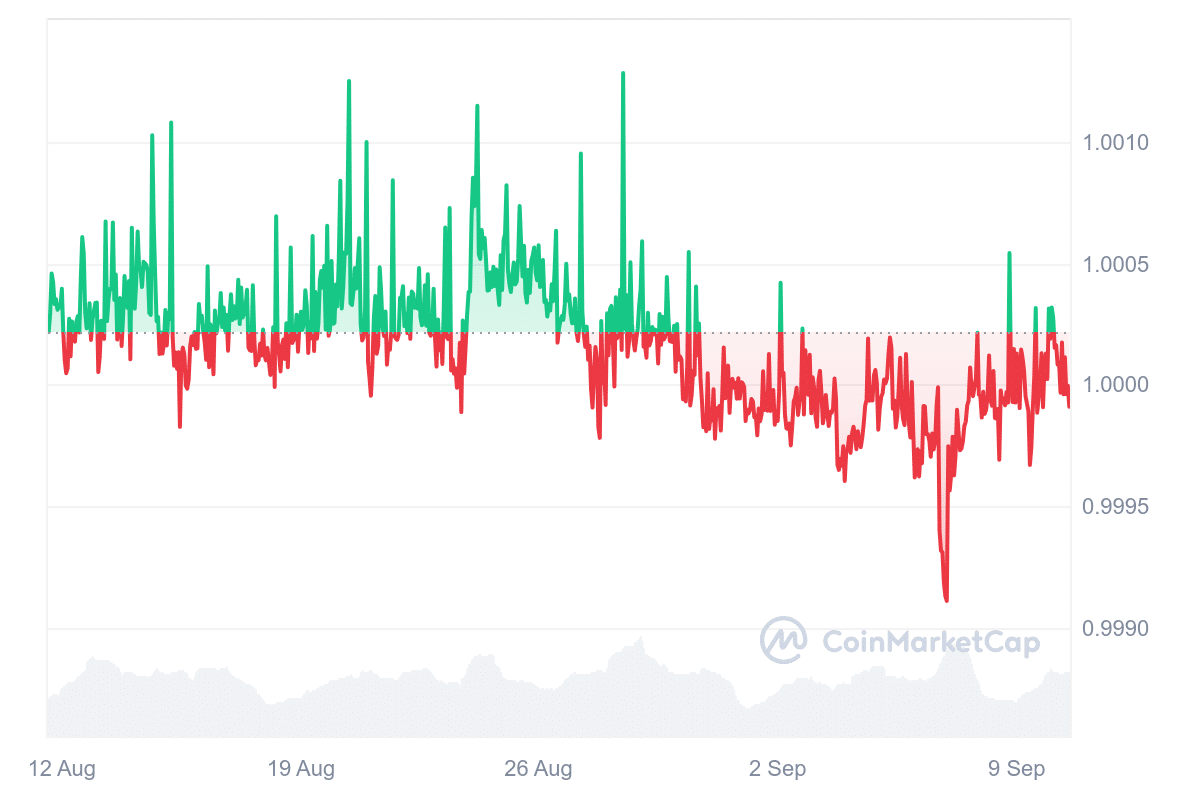
For instance, during periods of heightened market activity or stress, a sudden surge in demand for USDT could cause the price to rise above $1, as traders may pay a premium for quick access to a stable asset. Conversely, a rapid sell-off of USDT can lead to a brief dip below $1, as the supply temporarily exceeds demand.
Only entities that are verified and have an account with Tether can directly exchange USDT for USD. Typically, these entities are institutional clients, large traders, or exchanges. On the other hand, retail investors or smaller traders cannot redeem USDT directly from Tether. Instead, they usually convert USDT to USD on cryptocurrency exchanges.
However, controversy has surrounded Tether for years, and negative sentiment remains strong. One of the primary concerns revolves around the transparency of Tether’s reserves. Critics have questioned whether Tether has always maintained a full 1:1 backing for USDT tokens. In 2021, Tether settled with the New York Attorney General’s office after an investigation found that Tether had misrepresented the extent of its reserves in the past.
Another point of criticism is the lack of full audits by top-tier accounting firms. While Tether has started providing transparency reports on a quarterly basis, many are skeptical due to the absence of comprehensive audits by major global accounting firms.
Despite the controversies and skepticism, Tether remains extremely profitable due to its widespread use. In the first half of 2024 alone, Tether reported a profit of $5.2 billion.
USDC
USDC operates in much the same way as USDT. However, the key difference lies in USDC’s emphasis on regulatory compliance and transparency. (USDC) Coin conducts monthly audits through top-tier accounting firms to verify its reserves to ensure users that each USDC token is backed 1:1 by real assets. The audit process provides a higher level of confidence compared to Tether’s quarterly attestations, as it aligns more closely with regulatory standards in traditional finance.
Despite their differences in transparency and regulatory alignment, both USDT and USDC share one major characteristic: centralization. The issuers can freeze or block tokens in specific accounts in compliance with legal orders. Both stablecoins have a history of blocking addresses when required by law enforcement or government authorities, which adds a layer of control that conflicts with the decentralized ethos of crypto.
DAI
But unlike USDT and USDC, DAI is a decentralized, overcollateralized stablecoin. DAI (DAI) is not issued by a centralized entity but is instead generated by users who lock up cryptocurrency (such as Ethereum) as collateral. The system requires that the value of the collateral exceed the value of the DAI generated. So even if the collateral’s value fluctuates, DAI remains adequately backed. If the value of the collateral drops too much, it is automatically liquidated to maintain the peg. One of the major advantages of DAI is that it cannot freeze, block, or blacklist specific addresses.
The future of stablecoins and government action
At present, stablecoins already represent around 1.5% of the global U.S. dollar trade, but the real tipping point will come when that figure reaches a much higher level — somewhere between 5% and 15%. Once stablecoins capture that much of the market, governments will likely need to work in tandem with the issuers, creating a regulated environment that merges traditional finance with the growing crypto ecosystem. Governments could either embrace stablecoins as a way to enhance the global dominance of the U.S. dollar or respond with strict regulatory oversight.
While some may suggest that governments might try to make stablecoins illegal, that scenario seems unlikely. Stablecoins, especially those pegged to the U.S. dollar, further cement the global power of the U.S. currency, aligning with national interests rather than working against them. By maintaining the status of the USD in global transactions through stablecoins, governments are likely to see their value in reinforcing the American dollar’s position worldwide.
But the rise of stablecoins also raises questions about security and reliability. Holding traditional paper money presents its own risks, including inflation and devaluation. Digital money in banks is also vulnerable, as seen with events like bank runs or systemic failures. And stablecoins carry big risks as well.
The collapse of TerraUSD, despite its entirely different structure from assets like USDT, USDC, and DAI; the situation with Silicon Valley Bank and USDC’s brief de-pegging in 2023, along with long-standing controversies surrounding USDT’s transparency, has shown that stablecoins are far from immune to market shocks and liquidity issues. While they offer some advantages, they are not entirely reliable for long-term wealth storage.
So, what should one hold? Following the TerraUSD collapse, it became clear that holding too much in any one stablecoin can be risky. A more balanced approach might involve holding assets that appreciate in value, such as stocks, bonds, BTC, ETH, SOL, or real estate while maintaining a small portion of cash or stablecoins for liquidity purposes. Ideally, this reserve should be enough to cover between 3 to 24 months of expenses, depending on one’s risk tolerance, and it could be kept in a high-yield savings account or through well-established decentralized finance platforms.
Disclosure: This article does not represent investment advice. The content and materials featured on this page are for educational purposes only.
Source link

Trader Says Top-10 Altcoin To Vastly Outperform Bitcoin and Ethereum, Hit New Record High Quicker Than Expected

5 tokens to consider buying today

Terra Luna Classic Community Discord On Proposal Amid LUNC Price Rally

Trump Nominates Pro-Crypto Hedge Fund Manager Scott Bessent as Treasury Secretary

Dogecoin surges 10% as this new altcoin shakes the market, and preps for stage 2 presale

Ripple CEO Shares Bullish News With XRP Army As Trump Names Treasury Secretary

On-Chain Data Shows The Bitcoin Price Bull Run is Far From Over

Trump Picks Pro-Crypto Hedge Fund Manager Scott Bessent for Treasury Secretary

Crypto millionaires will be made by April 2025: 6 coins to hold

Cardano Price Hits $1 But Analyst Says This Is Just The Start

Legacy Media’s Transformation: Why Evolution Beats Extinction

Massive Ethereum Buying Spree – Taker Buy Volume hits $1.683B In One Hour

Ethereum lags behind Bitcoin but is expected to reach $14K, boosting RCOF to new high

Bitcoin Miner MARA Buys Another 5771 BTC As Price Nears $100k

Jason "Spaceboi" Lowery's Bitcoin "Thesis" Is Incoherent Gibberish
182267361726451435

Top Crypto News Headlines of The Week

Why Did Trump Change His Mind on Bitcoin?

New U.S. president must bring clarity to crypto regulation, analyst says

Ethereum, Solana touch key levels as Bitcoin spikes

Will XRP Price Defend $0.5 Support If SEC Decides to Appeal?

Bitcoin Open-Source Development Takes The Stage In Nashville

Bitcoin 20% Surge In 3 Weeks Teases Record-Breaking Potential

Ethereum Crash A Buying Opportunity? This Whale Thinks So

Shiba Inu Price Slips 4% as 3500% Burn Rate Surge Fails to Halt Correction

‘Hamster Kombat’ Airdrop Delayed as Pre-Market Trading for Telegram Game Expands

Washington financial watchdog warns of scam involving fake crypto ‘professors’

Citigroup Executive Steps Down To Explore Crypto
Mostbet Güvenilir Mi – Casino Bonus 2024

Bitcoin flashes indicator that often precedes higher prices: CryptoQuant
Trending

 2 months ago
2 months ago182267361726451435

 24/7 Cryptocurrency News3 months ago
24/7 Cryptocurrency News3 months agoTop Crypto News Headlines of The Week

 Donald Trump4 months ago
Donald Trump4 months agoWhy Did Trump Change His Mind on Bitcoin?

 News3 months ago
News3 months agoNew U.S. president must bring clarity to crypto regulation, analyst says

 Bitcoin4 months ago
Bitcoin4 months agoEthereum, Solana touch key levels as Bitcoin spikes

 Price analysis3 months ago
Price analysis3 months agoWill XRP Price Defend $0.5 Support If SEC Decides to Appeal?

 Opinion4 months ago
Opinion4 months agoBitcoin Open-Source Development Takes The Stage In Nashville

 Bitcoin4 months ago
Bitcoin4 months agoBitcoin 20% Surge In 3 Weeks Teases Record-Breaking Potential


